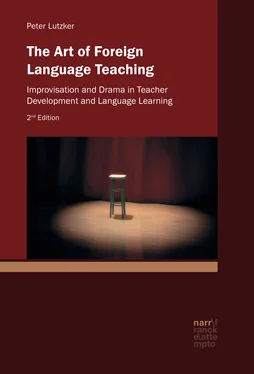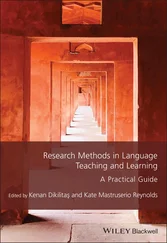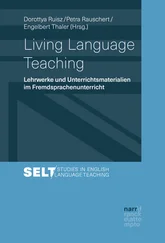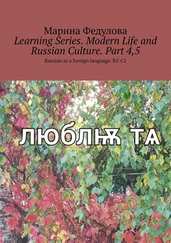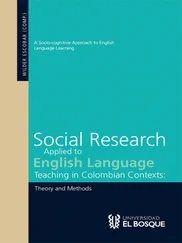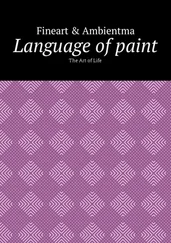Breath is linked to the voice and to emotions. When you are tense you tend not to breathe. Of course, you do breathe, but there is a difference between shallow breath and deep breath. Deep breath moves you closer to your emotions whereas shallow breathing is just physiological because you need to breathe to live. When you are restricting your breath, you tend to get tired more quickly. By inviting you to breathe, it opens you to revealing your emotions. (Interview 2)
Developing an awareness of the difference between shallow breathing and deep breathing, first during the warm ups and games and later in the improvisations, becomes a recurring theme in the workshops. Gladwell’s constant injunction during the work – ‘Breathe’ – often provides a moment of necessary release for highly concentrated and sometimes very preoccupied participants:
I often point out to teachers that the way they breathe will affect their classroom. Your breath shows what you are feeling but you are not usually aware of that. By saying, ‘Breathe’ I am saying, ‘Be aware of what your breath is telling you about your feelings and express that.’ When I say to someone, ‘Breathe’ it is always an indication that an emotion is not given its full expression. If you think about it, when you are holding your breath you are usually tense. But in clowning you shouldn’t withhold the expression of that tenseness, you are allowed to be tense, so release your breath, give full expression to your tenseness … If someone holds their breath, it tells me that they are putting effort into holding back what they are feeling. The best way I know of getting someone to be emotionally present to themselves is to say, ‘Breathe’ (Interview 2)
Another element in the warm-ups which is usually introduced only on the third day of the workshops is massage. He demonstrates specific massage techniques in which one person is sitting on a chair and the other massages him for about five to seven minutes. In pairs, participants then give these massages to each other. For many participants this is a wholly welcomed exercise and is enthusiastically requested on the following days. For others, however, this exercise requires another overcoming of inner barriers. As before, there is a gentle insistence in his manner which makes clear that overcoming such personal borders can be a very worthwhile process, even if it may involve feelings of discomfort and embarrassment. Once again, the expression of those kinds of feelings becomes a decisive element in the entire process.
As with eye contact, physical proximity and touching is part of a social language that defines our relationship to others and reveals our feelings and emotions. Not everybody likes massages and I respect that. But I hope that by the third day, participants trust sufficiently the work to be able to express the discomfort they might feel around any particular exercise. I am constantly saying, “If you don’t feel OK about something please express that. You need to learn to make the work safe for yourself by informing your partner… The important thing is to connect to the feelings (good or bad) that it generates and encourage a culture where everyone is able to say, this feels good or this doesn’t feel good. What you feel about something will always teach you something. (Interview 2)
6.2.4 The Warm-Ups as an Inner and Group Process
The warm-up phase lasting between 30 to 60 minutes is the necessary prelude to the games and improvisations that follow. It is inconceivable to imagine how one could enter into the activities that follow without being ‘warmed-up’ in the different senses of that term. However, these exercises clearly have a purpose and value which go past their functional and sequential role in each session. As is evident from the feedback of the participants, a range of feelings is awakened.
There is undoubtedly a strong physical/physiological component to this preliminary work as many of these exercises involve movement. Yet, although this making the body more flexible and responsive is an important aspect of this phase, what happens to the participants and within the group goes well beyond this. It is in the awakening or establishing of inner connections between one’s ‘self’ and one’s physical being that the most substantial links occur and, paradoxically, this highly internal and personal process is also dependent on what is happening within the group. In an atmosphere of play and trust, the gesture of reaching out and connecting to others, a basic and primal emotional need, is being encouraged and facilitated. As will become evident, this process is intimately tied to the art of clowning itself, but, at this point, the emphasis is not on art but on creating a sense of freedom and authenticity:
The physical warm-ups are to do with connecting to your inner life and not necessarily with how you are going to give expression to that. At this stage the concern is not with the artistic process. It is an inner journey with feelings and thoughts coming up. (…) This sensitivity to your inner life is important. I have previously mentioned authenticity. Authenticity is not a technique. It comes from connecting to your inner life which at first has nothing to do with expressing yourself. Then, you are invited to become aware of these feelings and thoughts and to give expression to them. That leads you on to the next stage. (Interview 2)
Although there are many elements in the first phase which are carried over to the second phase, particularly the general atmosphere of playfulness and lightness, there are also significant differences. As in all games, rules are established, although some games may involve the breaking of those very rules. All the different types of games in this phase involve different kinds of relationships – negotiating and collaborating, listening to others and empathizing with them. In many of the games, particularly towards the end of this phase, there is a strong element of imagination present – entering into roles and/or developing stories. The games are played with a partner, in small groups, or with everyone together.
6.3.1 Games of Imitation and Mirroring
The first games usually involve different forms of imitation. The game ‘Simultaneous Leader’ requires a group of four people facing one another to simultaneously imitate each other’s gestures and sounds. There should be no clear leader, but rather the role of the ‘impulse giver’ should be equally shared by everyone. Thus, the continual changing back and forth between self-initiated activities and imitating another requires a high degree of concentration and observation. Trying to achieve the highest level of synchronicity of movement and sound while at the same time trying to maintain an equality of ‘leadership’ between the members of the group creates an intense awareness of what is happening in those moments, generally precluding conscious filtering, judging or even thinking. At a later stage of the game one group may go out and ‘encounter’ another group – each group still imitating each other while reacting at the same time to the others, thus adding significantly to the complexity of the task. (The results are generally very humorous!)
For Gladwell, the process of imitation is a fundamental human capability:
There is something fundamental about imitation that I still find very mysterious. Imitation practices empathy. I believe imitation also tells us something important about how we negotiate our identity in the world. I believe we exist in resonance with others around us. We only truly become ourselves when we are able to become like others. Our ability to become other people makes us better at being ourselves. (Interview 2)
Читать дальше
